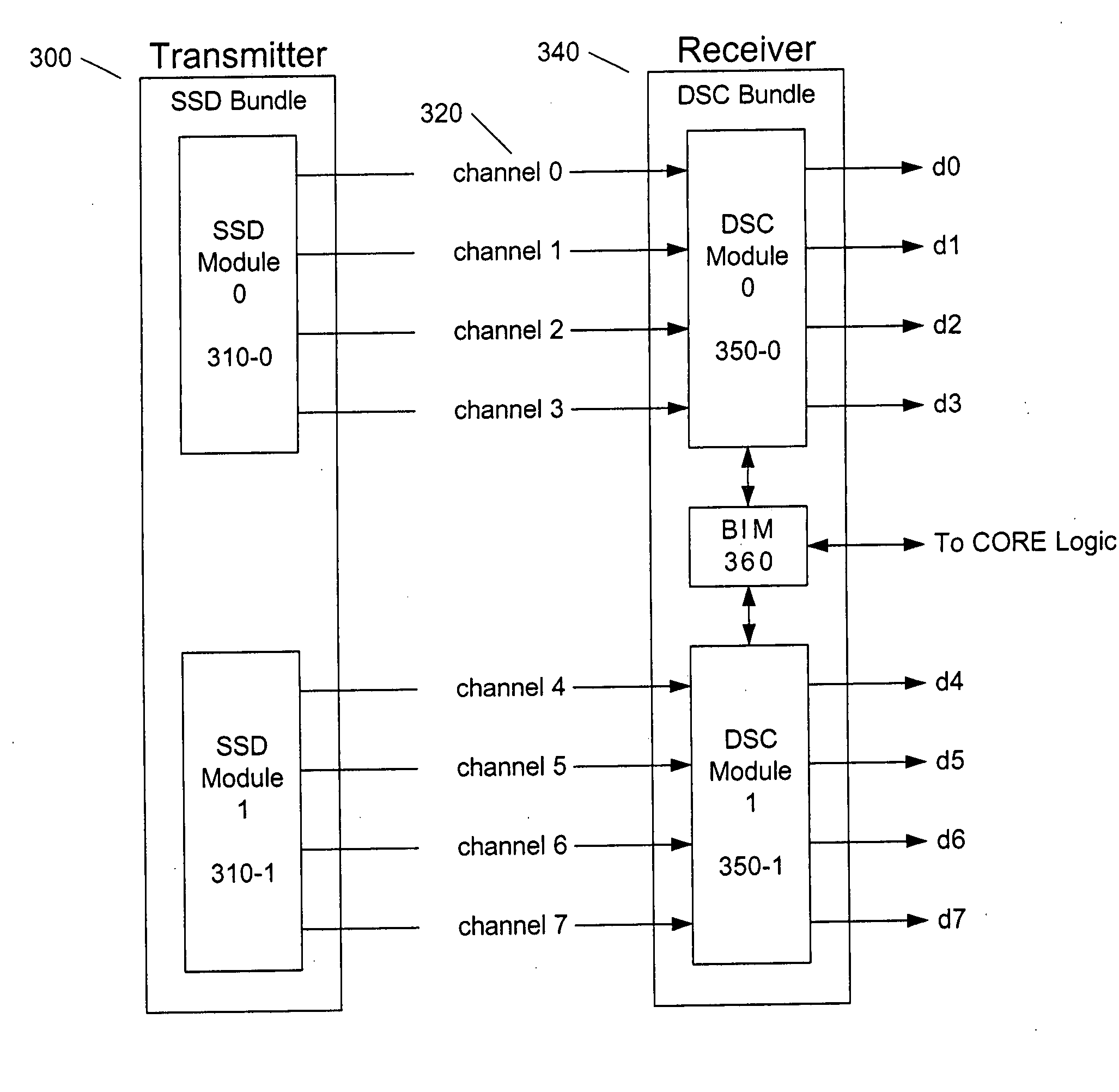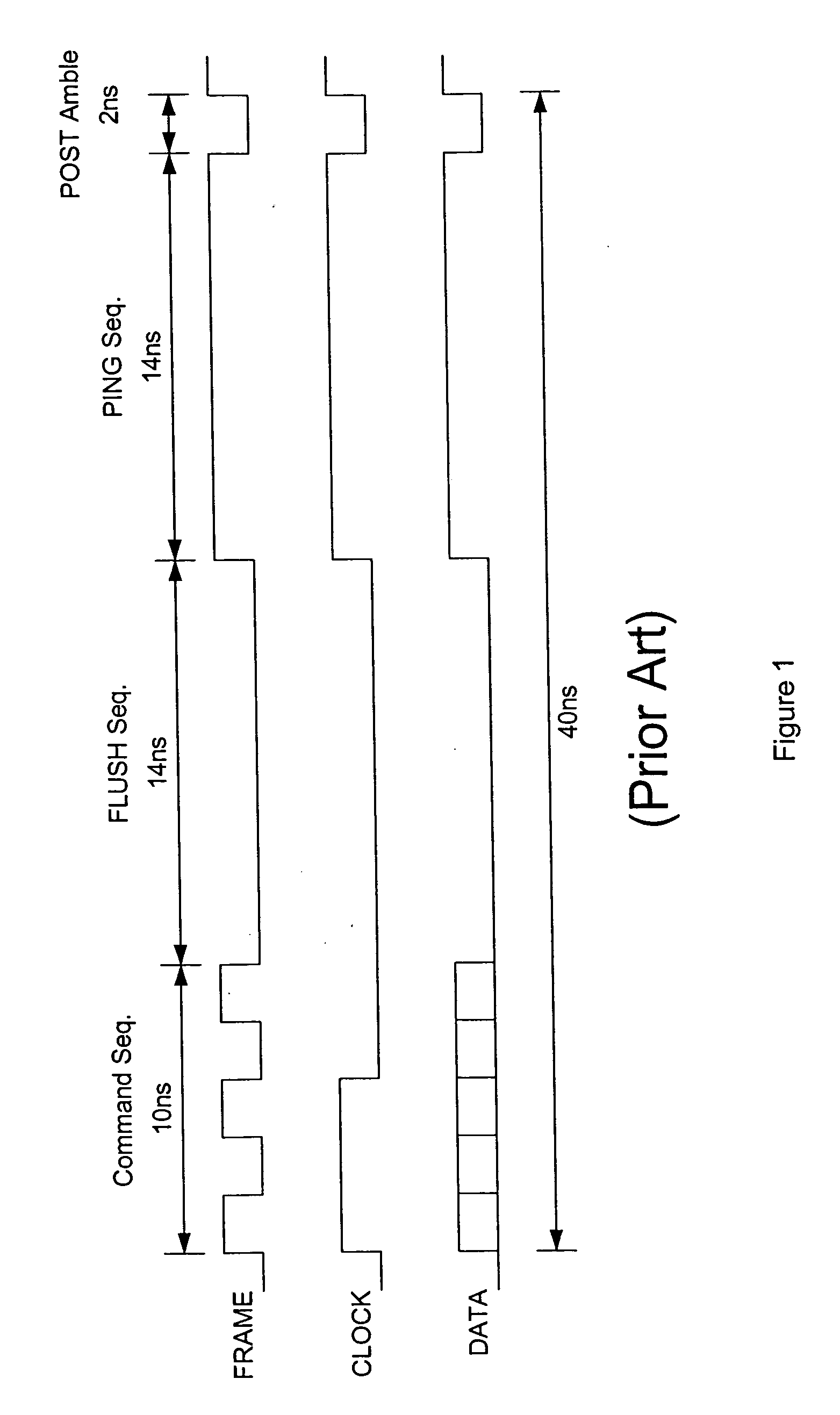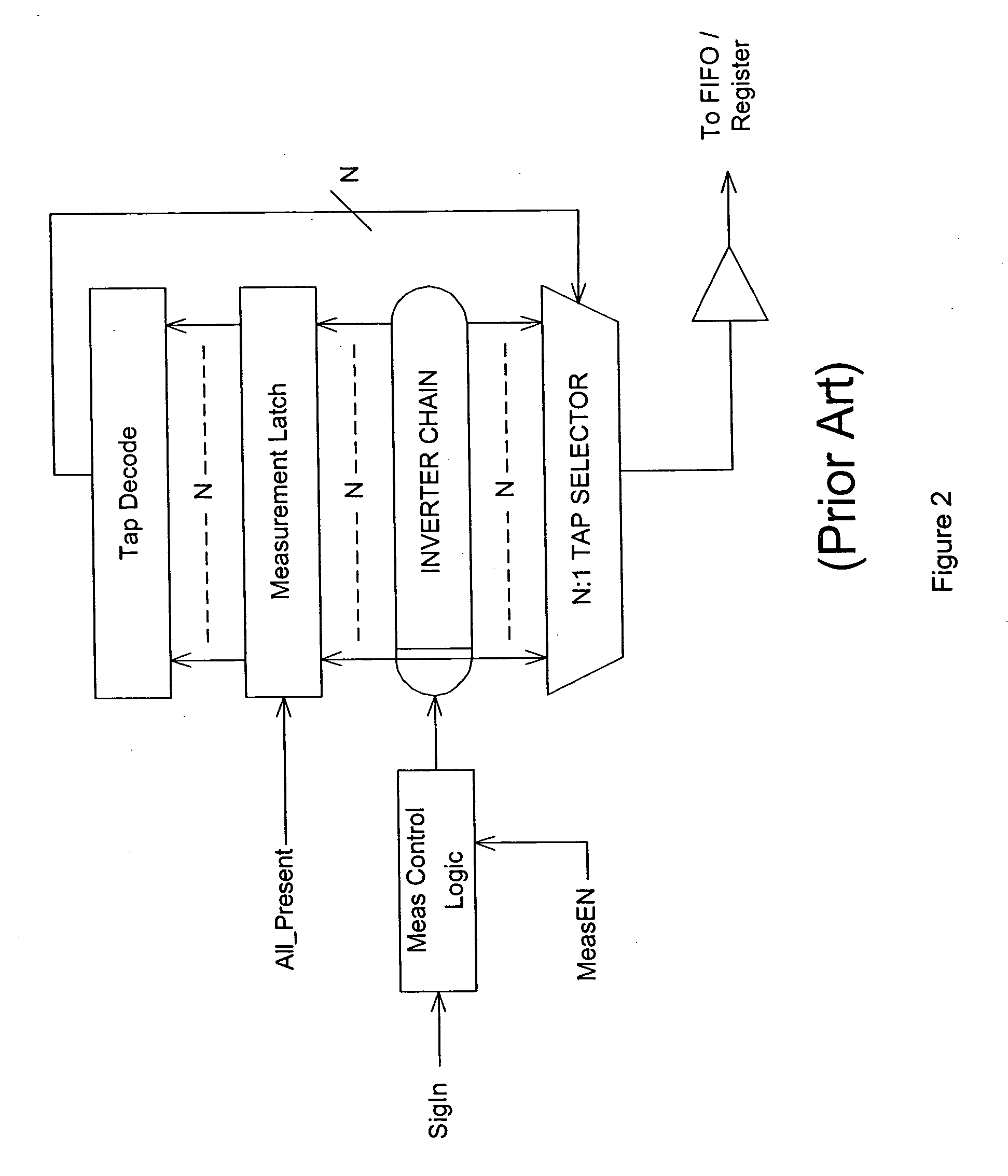Relative dynamic skew compensation of parallel data lines
a parallel data line and relative dynamic technology, applied in the field of can solve the problems of requiring significant re-architecting and design effort, unable to easily increase the bandwidth of serial links from the original implementation, and typically not the case for high-speed parallel data links, so as to reduce power consumption and reduce parts coun
- Summary
- Abstract
- Description
- Claims
- Application Information
AI Technical Summary
Benefits of technology
Problems solved by technology
Method used
Image
Examples
Embodiment Construction
[0061] In accordance with the various embodiments of the present invention and referring now to the figures, wherein like reference numerals identify like elements of the various embodiments of the invention, one can effectively perform relative dynamic skew compensation of parallel data lines. Additionally, the hardware implementation of the deskewing circuit in accordance with the present invention includes a delay line having a reduced parts count and reduced power consumption, and the deskewing circuit is process independent and is scalable.
[0062] A preferred embodiment of the deskewing system in accordance with the present invention is shown in FIG. 3. Generally, the link architecture and operation are as follows.
[0063] At a source node, a transmitter 300 comprised of one or more Source Synchronous Driver (SSD) Modules 310-0, 310-1, . . . 310-N drives data onto physical media, for example, optic fiber or copper ribbon cable, forming a parallel bus 320 consisting of a pluralit...
PUM
| Property | Measurement | Unit |
|---|---|---|
| time | aaaaa | aaaaa |
| phase | aaaaa | aaaaa |
| zero phase alignment | aaaaa | aaaaa |
Abstract
Description
Claims
Application Information
 Login to View More
Login to View More - R&D
- Intellectual Property
- Life Sciences
- Materials
- Tech Scout
- Unparalleled Data Quality
- Higher Quality Content
- 60% Fewer Hallucinations
Browse by: Latest US Patents, China's latest patents, Technical Efficacy Thesaurus, Application Domain, Technology Topic, Popular Technical Reports.
© 2025 PatSnap. All rights reserved.Legal|Privacy policy|Modern Slavery Act Transparency Statement|Sitemap|About US| Contact US: help@patsnap.com



